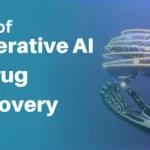We’ll delve into the fascinating world of Why Python is used in Data Science. Additionally, we will examine several data science methods with the Python programming language. As everyone knows, data science is used to combine various data sets to obtain information, project the insight, and analyze it to help make wise business decisions. However learning some of the top and most popular programming languages—like Java, C++, R, Python, etc.—is necessary to become a data scientist. Of these, Python is thought to be the most popular option among data scientists worldwide.
Why Do Data Scientists Love Doing Data Science in Python Language?
- Python serves as a direct medium for data sharing and processing language, connecting different business units.
- Presumably, graphics are included using different application programming interfaces and data visualization libraries.
- Python is becoming more and more popular in machine learning, data science, and numerical computations.
- Data scientists who work with Python must become proficient in scientific libraries, regular expressions, and data visualization techniques.
- Professionals or programmers who have a strong understanding of web programming concepts can pursue data science and learn Python with ease.
Why Python is used in Data Science?
- Simplicity and Readability: Python is renowned for having a simple syntax, which makes it simple for data scientists to write and comprehend code. Its ease of use shortens the learning curve and promotes quicker development.
- Rich Ecosystem: For Python, there is a robust and wide ecosystem of libraries and frameworks designed specifically for data science. Libraries like NumPy, Pandas, SciPy, Matplotlib, Scikit-learn offer vital tools for data manipulation, analysis, visualization, and machine learning.
- Community and Support: Python has a large and active community of data scientists, researchers, and developers. This implies that a wide range of learning materials, discussion boards, and tutorials are available for problem solving.
- Flexibility: Python is a flexible language that can be used for a wide range of tasks, including the creation and analysis of complex machine learning models as well as their deployment in real-world settings.
- Integration: Python’s seamless integration with various platforms and technologies allows data scientists to work with big data frameworks, databases, cloud services, and web applications with ease.
- Machine Learning and AI: The preferred language for artificial intelligence and machine learning is now Python. TensorFlow, PyTorch, Keras, and the previously mentioned Scikit-learn library confirm Python’s leadership in this field.
- Open Source: Because Python is an open-source language, its development is driven by the community and it is available for free. Because of its accessibility, it promotes creativity and teamwork.
Learn Python for Data Science
You will demonstrate your mastery of data science and analytics techniques using Python in our Caltech Post Graduate Program in Data Science. You will obtain thorough and useful knowledge in data analytics, machine learning, data visualization, web scraping, and natural language processing by using this course to learn the fundamentals of Python programming. Python is becoming a more necessary skill for many data science jobs, as we’ve seen, so take advantage of this engaging, practical course to advance your career.
You will have access to 44 hours of instructor-led training spread across 12 lessons, 24 hours of self-paced learning videos, and four real-world industry-based projects to work on, regardless of which option you select—Online Flexi-Pass or Corporate Training Solutions. You will be certified and prepared to take on new challenges as soon as you pass the test and fulfill the remaining requirements.
Over the next few years, there will be a nearly 1000% increase in demand for data scientists and data analysis; now is the time to act. Python proficiency is a must if you want to work as a data analyst or take the next step up to data scientist!
We have the best guide for becoming a data science expert. The Data Science Career Guide provides you with information on the latest technologies, top hiring firms, and skills required to begin a successful career in the rapidly growing field of data science.
Conclusion
Why Python is used in data science, One of the primary benefits of using Python for data research is its ease of use. Many data scientists come from technical fields like statistics or mathematics, but some have backgrounds in computer science or other programming languages. When they start working in the field, they might require more knowledge of coding. Python is a quick and simple programming language because of its simple syntax, which is easy to read and write.





